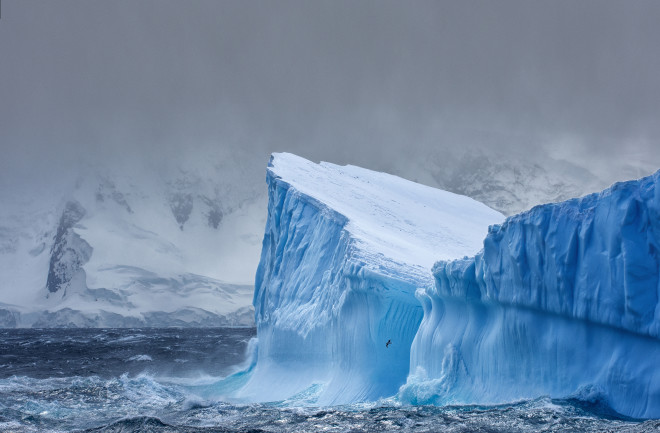Down in the coldest recesses of the deepest oceans, Earth’s circulatory system is pumping the brakes. Left unchecked, it threatens to halt a process that regulates the planet’s energy balance and stabilizes our climate.
“Earth’s climate is fundamentally controlled by our ocean and by the ocean’s overturning circulation,” says Matthew England, an oceanographer at Australia’s University of New South Wales. In March, he and a team published the most detailed global model of Antarctic water masses and other deep-sea currents to date in the journal Nature. They found that, compared to its flow in the 1990s, this vital oceanic conveyor belt could slow by about 40 percent before 2050.
Where are the Ocean Currents?
Deep water circulation kicks off at the polar extremes. In the southern Antarctic seas, freezing seawater relinquishes its salt, causing the water around it to grow heavy. Cold as ice and far saltier than a can of sardines, it plunges to more than 13,000 feet and begins slinking northward into the planet’s sunken ocean basins.
As decades pass, this extra-salty Antarctic Bottom Water (AABW) creeps toward the subtropics. There, waves and gyres pull it to the surface, making room up top by pushing warmer water to higher, colder latitudes where it too begins to freeze, descend, and join the loop.
In this way, some of the coldest water on Earth moves heat, carbon, oxygen and other nutrients around the globe. It feeds phytoplankton, fuels ecosystems and wields enormous influence over our climate. But the system is failing, and England’s research proves why — with an answer that shouldn’t be a surprise.
Our greenhouse gas emissions have warmed the poles, causing the Antarctic ice shelf to melt and release huge amounts of freshwater into the sea. This influx causes polar water to become less salty, less dense, and thus less apt to sink.
“It’s alarming in the sense that the feedback from this collapse of the overturning is more warming, and that means more ice melt,” England says. “There’s a chance that we’ve locked in a collapse of this overturning.”
What Could Happen to the Ocean Ecosystems?
Such a breakdown hasn’t happened for more than 100,000 years, since at least the last interglacial period. And it would be devastating. Changes we already endure — collapsing marine ecosystems, strengthening cyclones, smothering heat waves, bleaching coral reefs, and calamitous sea level rise — would only intensify. In July, a team from Denmark revealed how similar warming in northern seas is on pace to stall the AABW’s Atlantic sister current by midcentury.
To model circulation strength at unthinkable depths, England’s team relied on direct observations of temperature, as well as vital measurements taken by the larger oceanographic community. These included oxygen levels recorded across ocean strata, and even measurements taken from transducers strapped to elephant seals — a technique used to get as close to the ice shelf as possible.
“They made a model that created Antarctic Bottom Water in a realistic way, and nobody else had understood that,” says Spencer Jones, a physical oceanographer at Texas A&M University who was not involved in the study.
Using data at an incredibly fine scale, the landmark research is consistent with circulation slowdowns projected in recent Intergovernmental Panel on Climate Change reports, and exposed how the melting ice shelf, specifically, is driving this change.
England says getting his team’s experiment right also took a bit of luck. Avoiding its predictions, however, will require deliberate action. “We’re probably halfway into the slowdown we projected,” he says. “It’s a tough ship to turn around, but with dramatic emissions reductions, we can save it from a full collapse.”
This story was originally published in our January February 2024 issue. Click here to subscribe to read more stories like this one.

